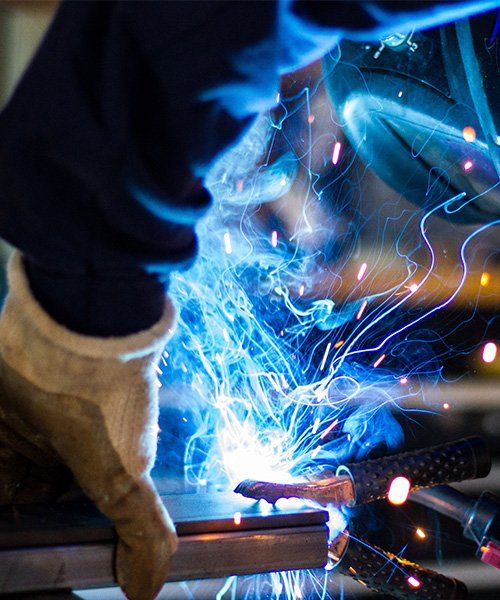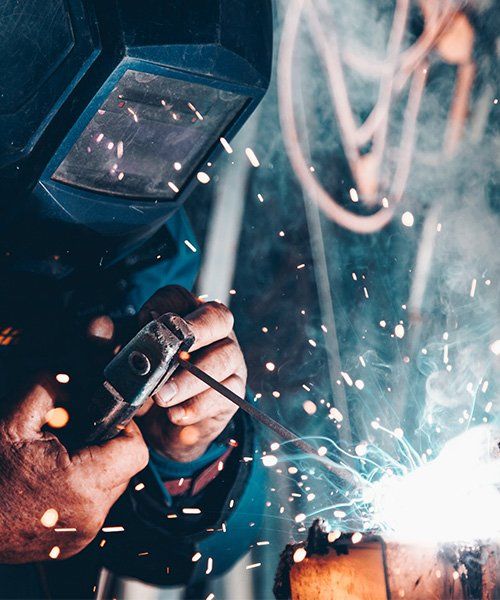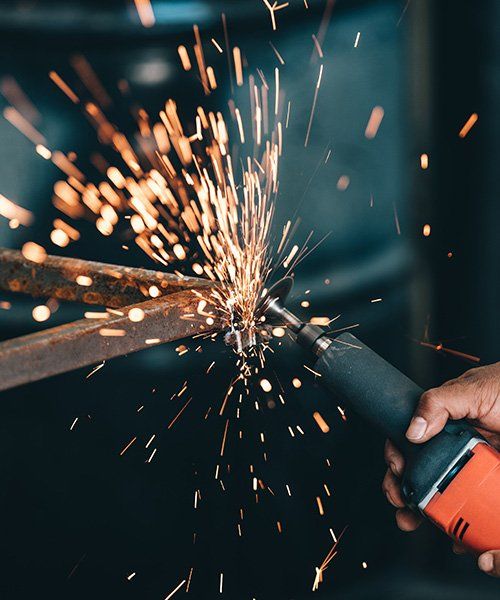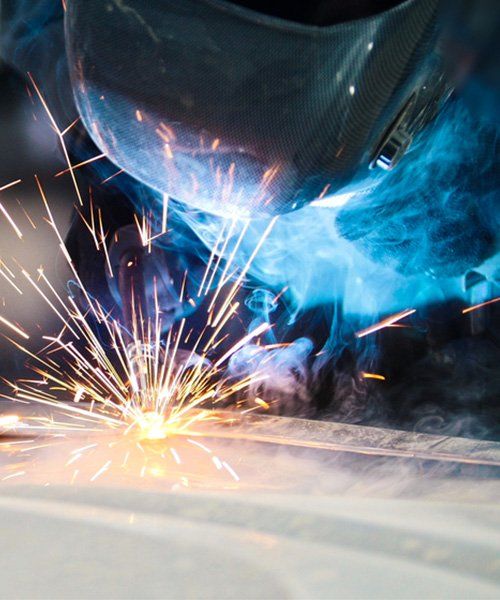

What We Do
MIG WELDING
Gas metal arc welding or MIG welding is an electric arc welding process that uses a spool of continuously fed wire. It can be used to join long stretches of metal without stopping. The welder, or apparatus, holds the wire feeder and a wire electrode is fed into a weld at a controlled rate of speed, while a blanket of inert argon gas shields the weld zone from atmospheric contamination. Shielding the arc and molten weld pool is done by “externally” supplying gas or a gas mixture. MIG welding can be used on all thicknesses of steels, on aluminium, nickel, and even on stainless steel, etc. However, it is most typically utilised in manufacturing and in commercial fabrication settings. With Mig Welding High quality welds can be produced much faster, since a flux is not used there is no chance for the entrapment of slag in the weld metal resulting in high quality welds, the gas shield protects the arc so that there is very little loss of alloying elements causing only minor weld spatter is produced. MIG welding is versatile and can be used with a wide variety of metals and alloys, The MIG process can be operated several ways, including semi and fully automatic.
What We Do
TIG WELDING
TIG Welding is also known to many welders as Gas Tungsten Arc Welding. It is a welding process that uses TIG electrodes which do not dissolve or burn during welding and an electric arc. TIG welding simply involves the melting of metals together without using any filler metal, as in MIG welding. TIG welding is commonly applied when welding stainless steel, aluminium, and other similar light metals.
TIG is popular because it has the most variables; for it can weld most metal types and any thickness. Artists also use TIG for artwork and even in industries that require clean, authentic, and the most pleasant welds.




What We Do
STICK Welding
SMAW or Shielded Metal Arc Welding, also called stick welding is the most commonly used welding approach in all arc welding procedures. To join various metals, it utilises an electric current and an anode at the weld pool. Its versatility and simplicity makes it more popular.
The anode consists of a stick or solid metal stick therefore the name encircled by a covering of metal powders and composites with an agent that binds them so that they can fasten to its surface. Stick welding is mainly used in welding steel and iron and is widely used in the repair and maintenance industries, as well as in the construction of heavy steel structures.
Get Started Today
Contact Us For All Your Welding Needs
We’d love to hear from you. Call us now at 0405639030 or send a message using the form below we’ll get back to you as soon as we can.
Non-Booking Fees and Weekend Rates Apply
What We Do
wHY cHOOSE uS
At Stan Freeman’s Welding Mig, Tig and Stick Welding are the basis for all fabrication works such as the following:


Types Of Steel
Various Sheet Metal Work
Sheet Metal Work is another large section of Stan Freeman’s Welding used to fabricate various applications such as toolboxes, boat repairs, trailer repairs, basically everything and anything.
Sheet metal is metal formed by an industrial process into thin, flat pieces. Sheet metal is one of the fundamental forms used in metalworking, and it can be cut and bent into a variety of shapes. Countless everyday objects are fabricated from sheet metal.
Thicknesses can vary significantly; extremely thin sheets are considered foil or leaf, and pieces thicker than 6 mm (0.25 in) are considered plate steel or "structural steel". Using a range of welding techniques we are able to provide a range of various sheet metal work ranging from panels for trailers, toolboxes. Commonly used sheet metal materials can be divided into two categories, which are:
- Galvanized Steel
- Stainless Steel
Stan Freemans Welding
Safe, Fast and Strong welding solutions.
Have a question? We are here to help. Send us a message to enquire or call us for a quote today.
